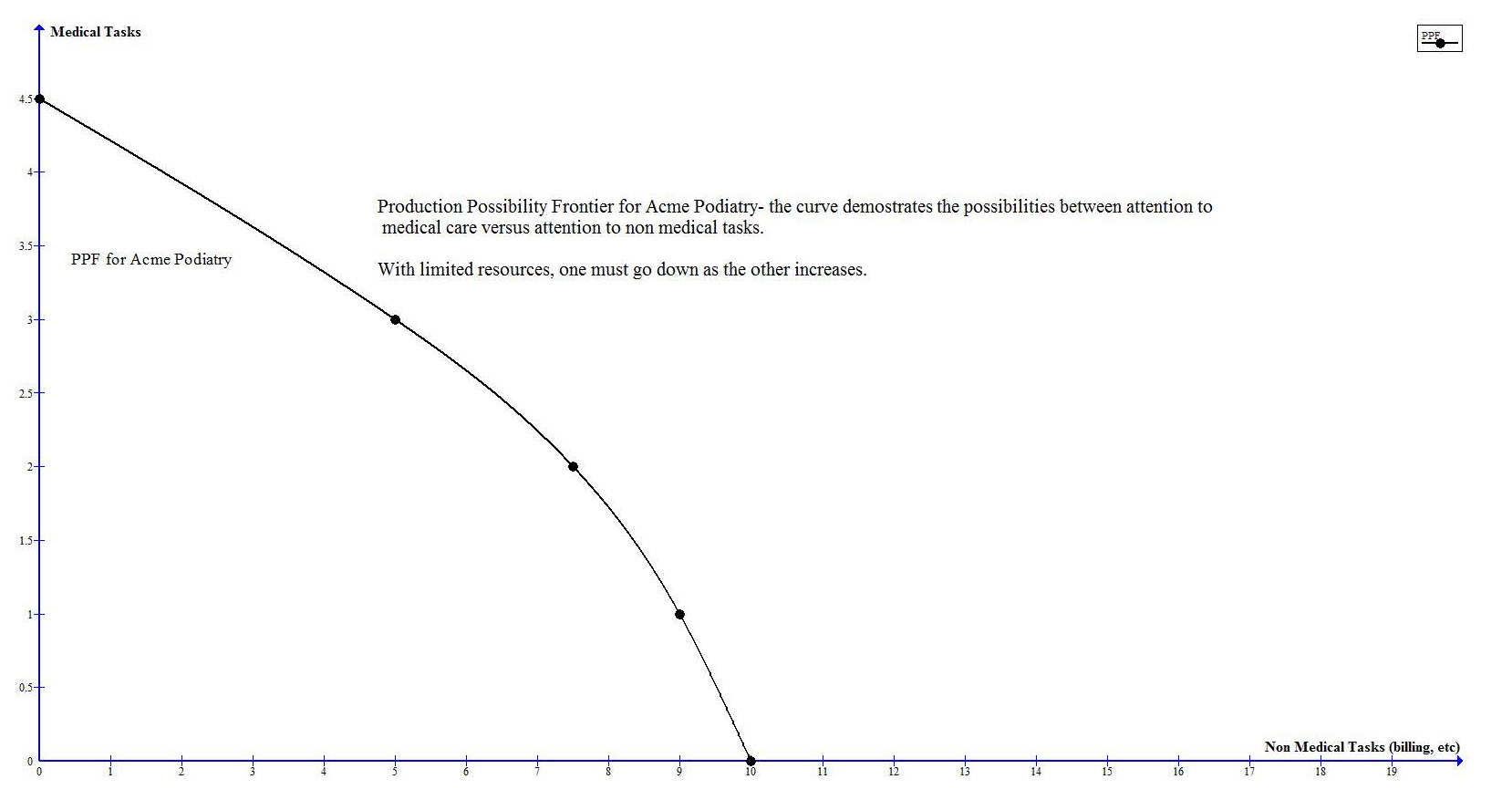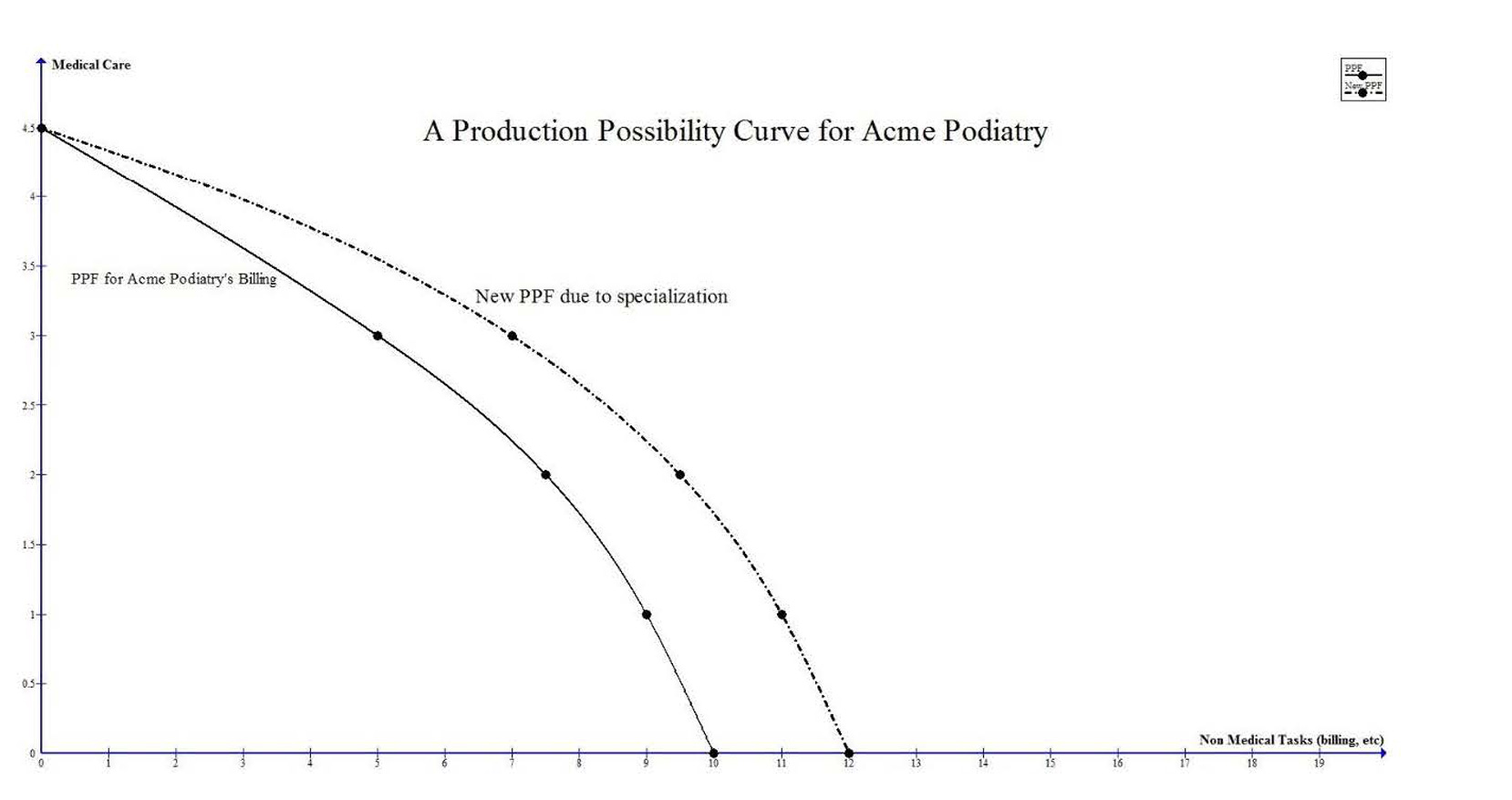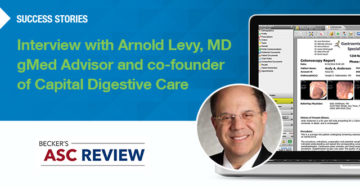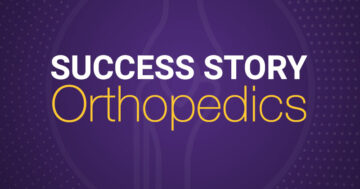Technology and Opportunity Costs: Let Opposites Attract
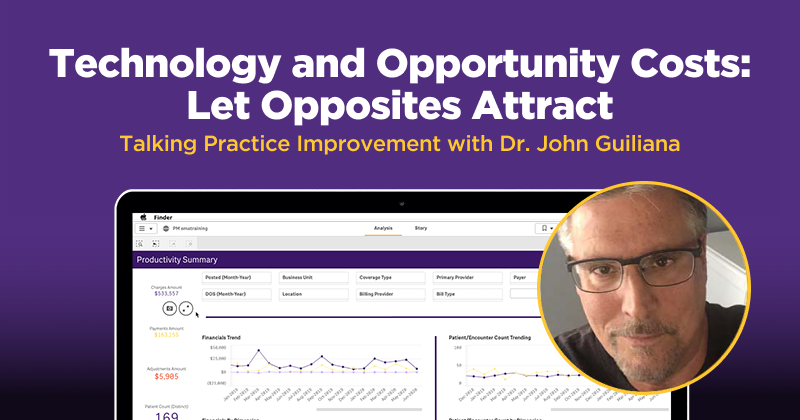
Unveiling the hidden opportunity costs of common private practice decisions
By John V. Guiliana, DPM, MS
Those who know me know that I am a perpetual student of microeconomics. Call me crazy but I just have a certain affinity for the subject.
In this blog, I discuss the microeconomic principle of “opportunity cost” and hope to help you understand its relevance to your practice. As economic pressures grip medical practices and stress their resources, addressing the concept of opportunity cost becomes instrumental.
Defining opportunity costs
In microeconomic terms, an opportunity cost is the cost of an alternative that must be forgiven to pursue a certain action. Put another way, it’s the benefits you could have received by taking an alternative action.
Medicine is rapidly becoming a hybrid of medical care (patient care) and nonmedical care (business management, billing, etc.). Unfortunately, unless resources are unlimited, we cannot devote time to one without sacrificing time devoted to the other. That is the applicable opportunity cost. Economists use what’s known as a Production Possibility Frontier (PPF) curve to explore where maximum growth potentials exist. Below is a hypothetical PPF curve for Acme Podiatry (fictional) that demonstrates the “something has to give” aspect of opportunity costs.
Now let’s consider the true costs associated with the billing process of a medical practice. According to national averages, a full-time biller costs approximately $45,000 per year (salary, taxes, benefits), and for each $600,000 in collections, one full-time biller is required. Therefore, a practice generating $1.2 million in collections would typically require two full-time billers. Using these national averages, the cost of the billers related to collections would be 7.5% ($90,000/$1,200,000). That is just the human resource cost.
We must also consider the cost of technology, training, office space and so on. Just as the PPF curve explains the opportunity cost associated with medical care versus nonmedical care, there are opportunity costs associated with all of the additional biller expenses just noted.
The total cost of each biller could easily climb to over 10%. And what if the billers were not specialized, or these individuals also handled other tasks within the practice? What if the billers were not trained enough to work as accurately and as fast as possible? The costs could go up exponentially. The real objective to maximizing growth is NOT to move along a PPF curve and give up something to gain another. The real growth comes from shifting the PPF curve outward through specialization of labor, which requires outsourcing.
In the PPF curve above, our fictional Acme Podiatry decided to leverage technology that allows for suggestive coding through artificial intelligence interpreted from chart notes. This reduced the practice’s reliance on human capital as well as billing errors and payment delays. This technology-driven specialization strategy allowed for an outward shift of the PPF curve, so that at any given point of medical care (represented by the dots), resources available for nonmedical tasks, such as denial appeals, preauthorizations and E/M coding (which could potentially create even more revenue) would be much greater. Now that’s true economic growth!
Does your technology allow for economic growth by assisting in tasks that lower your opportunity costs? Opportunity costs are too impactful to ignore!
Medicine is rapidly becoming a hybrid of medical care (patient care) and nonmedical care (business management, billing, etc.). Unfortunately, unless resources are unlimited, we cannot devote time to one without sacrificing time devoted to the other.
About John V. Guiliana, DPM, MS
Dr. Guiliana is a nationally recognized speaker and author on topics pertaining to medical practice management. He is a fellow of the American Academy of Podiatric Practice Management and holds a master’s degree in healthcare management. He has authored numerous columns in various journals and is the coauthor of 31 ½ Essentials to Running Your Medical Practice, as well as The Million Dollar Practice…Keys to Success. Dr. Guiliana is currently medical director of podiatry for the award-winning technology of ModMed. He can be reached at [email protected].
This blog is intended for informational purposes only and does not constitute legal or medical advice. Please consult with your legal counsel and other qualified advisors to ensure compliance with applicable laws, regulations and standards.
